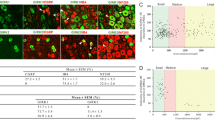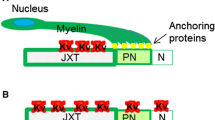Summary.
Summary.
Background:
The axolemmal distribution and density of voltage-gated sodium channels largely determines the electrical excitability of sprouting neurites. Recent evidence suggests that accumulation of sodium channels at injured axonal tips may be responsible for ectopic axonal hyperexcitability and the resulting abnormal sensory phenomena of pain and paresthesias. For future improvement in pain management it is necessary to identify structurally significant generators of autorhythmicity. A first step in this regard will be to determine the predominant types of sodium channels in injured axons. The opportunity to test human specimens from painful and non-painful neuroma is of great value.
Methods:
We employed immunocytochemical methods to investigate if two types of highly specific voltage-gated sodium channel subtypes could be detected in sections of human neuroma.
Findings:
Both subtypes of sodium channels PN1 and PN3 accumulated abnormally in human neuromas. The immunoreactive pattern was more pronounced in painful neuromas. This is in contrast to previous reports that focused either on PN1 or PN3 as main generators of hyperexcitability induced pain.
Interpretation:
Both, PN1 and PN3 seem to be involved in hyperexcitability induced pain. It can be expected that a variety of other highly specific voltage gated sodium channel subtypes will be detected in regenerating peripheral nerve in the near future, which contribute to the development of neuropathic pain states. Thus, in order to therapeutically control hyperexcitability induced neuropathic pain, it might be worthwhile to develop pharmaceuticals that can selectively block different sodium channel subtypes and subunits.
A review of the role of sodium channels in neuropathic pain is implemented in the discussion.
Similar content being viewed by others
Author information
Authors and Affiliations
Additional information
Published online August 12, 2002
Rights and permissions
About this article
Cite this article
Kretschmer, T., Happel, L., England, J. et al. Clinical Article Accumulation of PN1 and PN3 Sodium Channels in Painful Human Neuroma-Evidence from Immunocytochemistry. Acta Neurochir (Wien) 144, 803–810 (2002). https://doi.org/10.1007/s00701-002-0970-1
Issue Date:
DOI: https://doi.org/10.1007/s00701-002-0970-1




